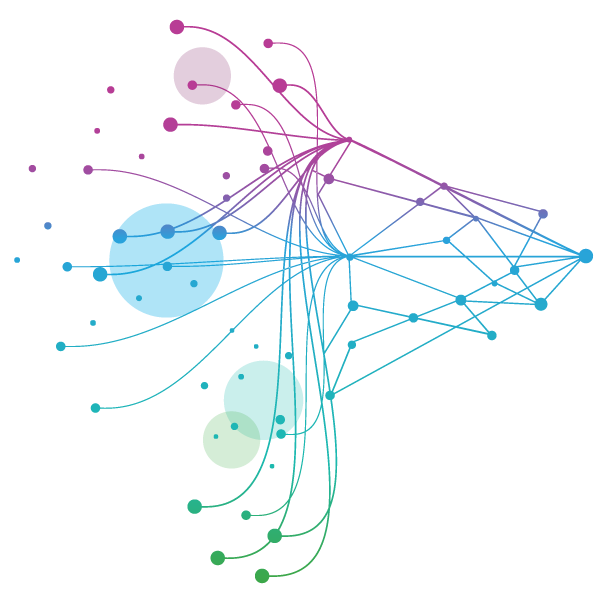Change the model of clinical research by integrating data, expertise, analytics and technology from study design through execution to power better decisions.






















- Blogs
- Global Trends in R&D 2025: Signs of Higher Efficiency and Productivity
Earlier this year, the IQVIA Institute for Human Data Science released Global Trends in R&D 2025 — our annual analysis of trends in R&D funding, clinical trial activity, new drug approvals and launches, and productivity.
Among the top-line findings: many signals are positive.
For starters, it was the second consecutive year of higher biopharma funding, with growth contributions coming from IPOs, follow-on funding, and other public and private sources. Aside from the 2020 and 2021 heights seen during the pandemic, funding reached a 10-year high of $102 billion in 2024. That represents a substantial increase over the 2023 figure of $71 billion.
Additionally, clinical trial start volumes have fully returned to pre-pandemic levels as priorities have continued to shift. The total volume of clinical trial starts in 2024 hit 5,318 — a number remarkably similar to the 5,316 pre-pandemic count in 2019 and slightly above the 5,302 total of 2023.
We also found evidence of higher clinical program productivity and stabilizing cycle times — two important findings for company sponsors and other key stakeholders.
As we move through 2025, new variables have come into play in the U.S. — potentially including pharma-specific tariffs as well as pricing reform — and it is important to acknowledge that these could have significant downstream implications for global pharmaceutical innovation. Nevertheless, understanding the trends and direction as of the end of 2024 provides a useful baseline perspective on the pathway to higher efficiency and productivity.
R&D productivity on the rise
In R&D, productivity has two core components: efficiency (the cost to translate ideas into approved products) and effectiveness (how much value each output/product delivers). For this year’s report, the Institute used a refreshed Clinical Program Productivity Index (CPPI) that examines clinical development productivity based on a combination of trial and program parameters. We define a “program” as a unique combination of investigational drug and indication.
In short, the CPPI combines success rates, trial complexity, and trial duration into a single composite metric of productivity in a clinical development context.
The CPPI indicates higher clinical productivity in 2024 vs. 2023 thanks to an improvement in Phase III success rates, which counterbalanced worsening trial durations. While overall trial complexity remained broadly flat, we saw variability in underlying components — with increased subjects and sites counterbalanced by reduced country footprint and eligibility criteria. More specifically, the CPPI in 2024 reached 11.7 compared to the 2023 value of 10.9. Although that indicates movement in the right direction, the CPPI is still lower than it was pre-pandemic, with historical values consistently exceeding 15 until 2019.
Cycle times stabilizing
Overall R&D program duration — from Phase I start to regulatory approval — has broadly increased since 2015 but has been stabilizing since 2022. The total program duration in 2024 was 9.3 years, a slight decrease from the peak of 10.1 years in 2022.
In addition, this year’s analysis found that enrollment duration, which presents the largest opportunity to improve trial cycle times, stabilized in 2024 at 15.9 months. That’s an improvement over the peak observed in 2023 (16.2 months).
We also found that inter-trial intervals now typically contribute 17 months to overall medicine development time across an R&D program. This represents a nearly full recovery from the pandemic-driven peak of 32 months observed in 2022 — and indicates improved efficiency in moving between trial phases.
Driving continued productivity improvements
The report also explores how sponsor companies are embracing productivity enablers to further improve speed, success rates, and costs. These include:
- Artificial intelligence (AI), which is rapidly gaining traction in R&D. Almost $10 billion in artificial intelligence/machine learning (AI/ML) deals were announced in 2024, and an increasing number of trials involve AI-focused companies mostly focused on target and drug discovery.
- Novel trial designs, including umbrella, basket, master, and adaptive protocols. Adoption of such designs increased to 19% of trials in 2024.
- Improvements in regulatory submissions, including improvements to sponsor capabilities in navigating these submissions, as evidenced by fewer Complete Response Letters received for clinical issues in 2024.
- Growing use of real-world data (RWD), with five FDA approvals in 2024 that were dependent on such data — underscoring growing opportunities to use such evidence to support R&D productivity.
Amid long-term challenges related to development durations and success rates, the Institute’s most recent R&D Trends report indicated that industry was recapturing momentum in 2024.
Despite the uncertain impact of recent developments, the full Global Trends in R&D 2025 report provides a deep dive into the innovation landscape as it stood at the end of 2024 — including the enablers used by sponsor companies to build on the increased momentum observed. Importantly, the analyses in this report also provide a foundational baseline against which the impacts of new developments can be examined as they translate into concrete decisions and actions.

Institute Report
Global Trends in R&D 2025
You may also be interested in
Related solutions
Discover unrealized connections and manage your product across the entire lifecycle, from research and development, compliance to launch and commercialization.





